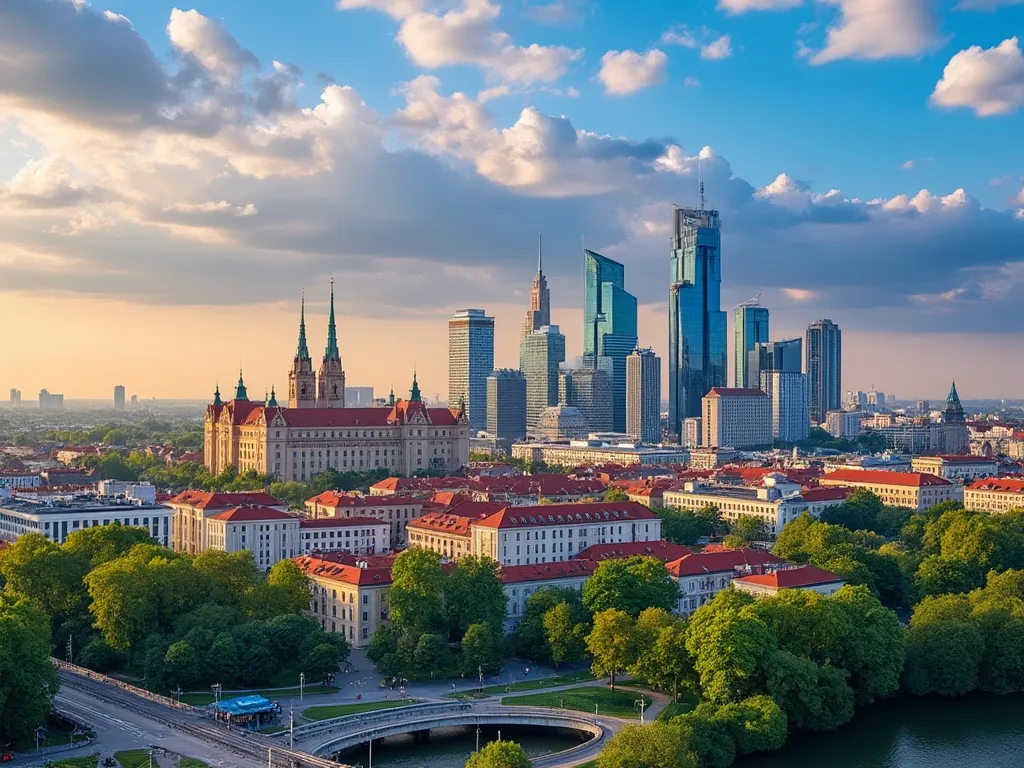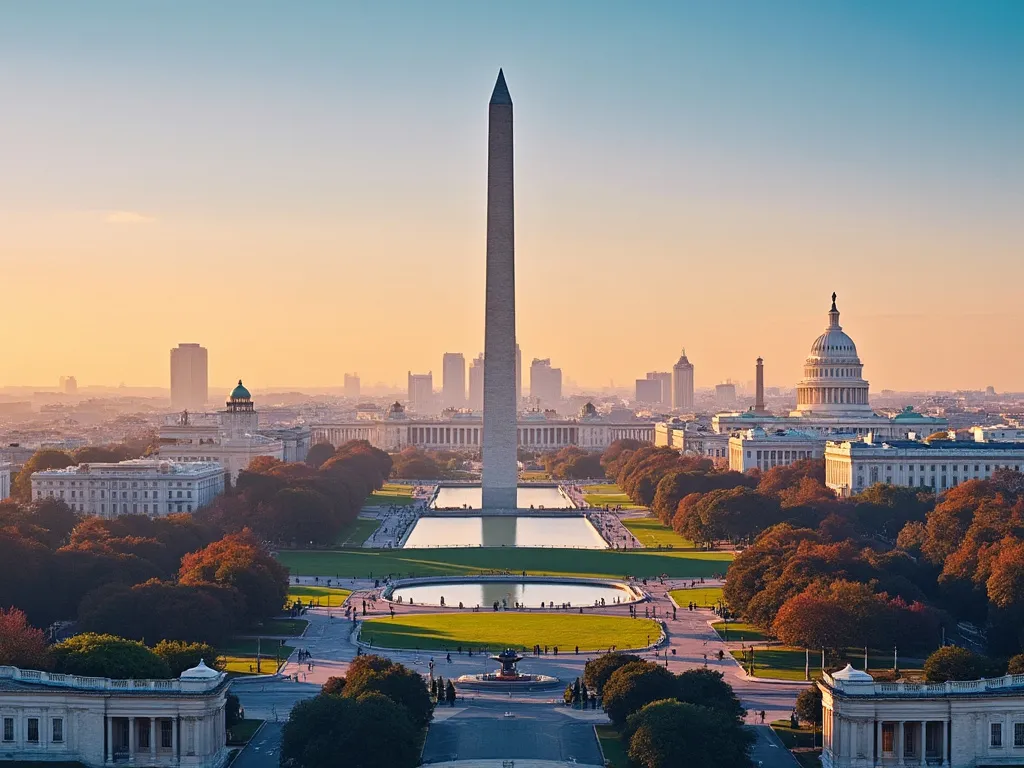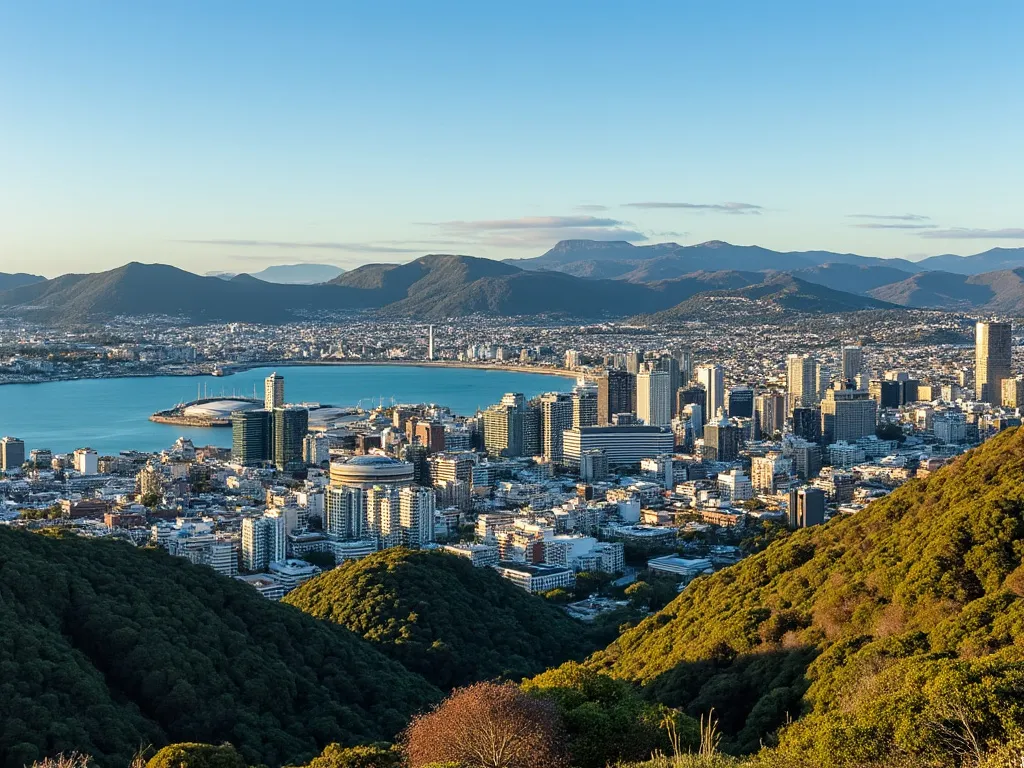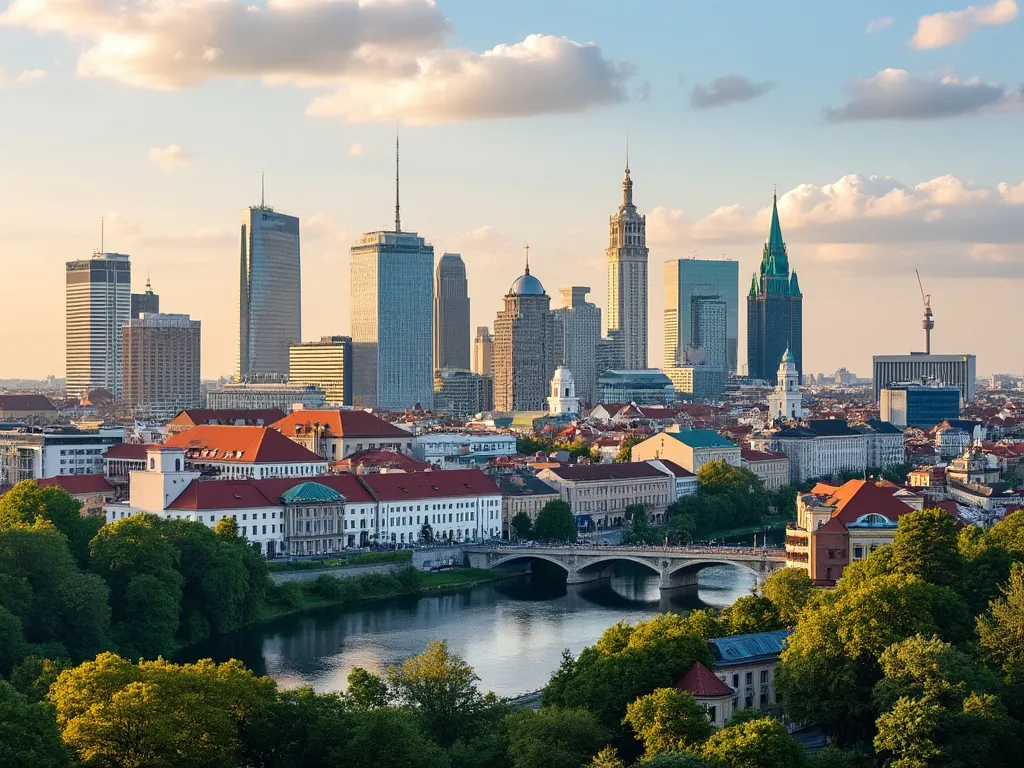
Warsaw, the capital and largest city of Poland, has a rich and tumultuous history that spans over 700 years. Founded in the 13th century, Warsaw has been a significant cultural, economic, and political center in Eastern Europe.
Warsaw information
| Country | 🇵🇱 Poland |
| Population | 1.764 million (urban area: 3.1 million) |
| Coordinates | 52°13′N 21°02′E |
| Area | 516.9 km² (199.6 sq mi) |
| Climate | Humid continental (Köppen climate classification: Dfb) |
| Language | Polish |
| Currency | Polish złoty (PLN) |
| Time zone | Central European Time (CET) |
| Proximity to other major cities | Berlin (570 km/354 mi), Prague (520 km/323 mi), Vienna (460 km/286 mi) |
Interesting facts about Warsaw
- Warsaw is home to the oldest zoo in Poland, the Warsaw Zoo, which was founded in 1928.
- The city has a network of underground tunnels and bunkers, known as the "Warsaw Underground," which date back to the 19th century.
- Warsaw is home to the tallest building in Poland, the Warsaw Spire, which stands at 220 meters (722 feet) tall.
Tourist attractions in Warsaw
- Old Town (Stare Miasto)
- Warsaw Uprising Museum
- National Museum
- Polish National Opera
- Warsaw Zoo
Historical background of Warsaw
Warsaw's early history was marked by frequent invasions and wars, including the Mongol invasion in 1262 and the Swedish Deluge in the 17th century. The city was also a major center of the Polish-Lithuanian Commonwealth, a powerful state that existed from the 16th to the 18th century.
In the 18th century, Warsaw was a major center of the Enlightenment in Poland, with many prominent thinkers and writers, such as Adam Mickiewicz and Juliusz Słowacki, contributing to the city's cultural and intellectual life.
Geographical location of Warsaw
Warsaw is located in the east-central part of Poland, on the Vistula River. The city is situated in the Masovian Plain, a vast flat area that stretches from the Carpathian Mountains in the south to the Baltic Sea in the north.
The city's geographical location has played a significant role in its history, with the Vistula River providing a major transportation route and the surrounding plain making it an attractive location for trade and commerce.
Cultural significance of Warsaw
Warsaw is a city with a rich cultural heritage, from its historic Old Town, a UNESCO World Heritage Site, to its numerous museums, galleries, and theaters. The city is home to the Polish National Opera, the Warsaw Philharmonic, and the National Museum, which houses a vast collection of Polish art and artifacts.
Warsaw is also a city of festivals, with the Warsaw Film Festival, the Warsaw Jazz Festival, and the Warsaw Uprising Anniversary being just a few examples of the many cultural events that take place throughout the year.
Economic importance of Warsaw
Warsaw is the economic hub of Poland, with a strong service sector, a growing IT industry, and a significant manufacturing sector. The city is home to many international companies, including IBM, Microsoft, and Google, and is a major center for trade and commerce in Central and Eastern Europe.
Conclusion on Warsaw
In conclusion, Warsaw is a city with a rich history, a vibrant cultural scene, and a strong economy. From its historic Old Town to its modern skyscrapers, Warsaw is a city that seamlessly blends tradition and innovation, making it a must-visit destination for anyone interested in exploring the best of Eastern Europe.
 Washington D. C.
Washington D. C.
 Wellington
Wellington
 Vientiane
Vientiane
 Vilnius
Vilnius